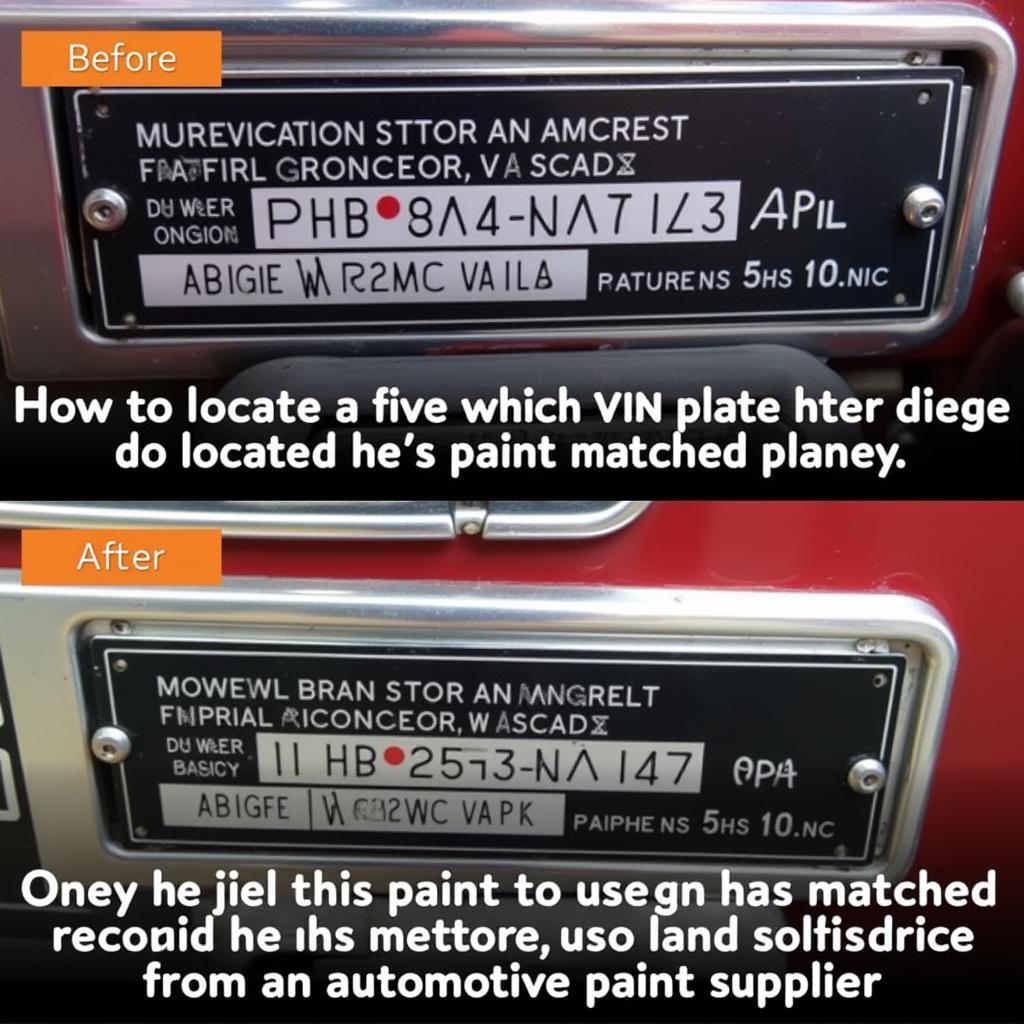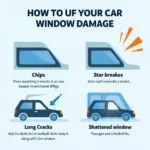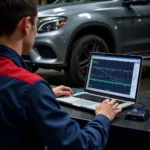Dealing with rust and paint damage on your car? This comprehensive guide will walk you through the essential materials needed to tackle these common car issues, whether you’re a DIY enthusiast or planning to consult a professional. We’ll cover everything from the basics to the more specialized tools and materials for effective car rust and paint repair.
Understanding the Problem: Rust and Paint Damage
Rust and paint damage not only detract from your car’s appearance but can also compromise its structural integrity if left untreated. Rust occurs when iron is exposed to oxygen and moisture, leading to corrosion. Paint damage, on the other hand, can be caused by various factors like UV rays, scratches, stone chips, and bird droppings, leaving your car vulnerable to the elements and ultimately, rust.
Essential Materials for Rust Repair
Tackling rust requires specific materials designed to remove the corrosion and protect the underlying metal. Here’s a breakdown of what you’ll need:
- Rust Remover: Choose from chemical rust removers, rust converters, or abrasive methods like sandpaper or wire brushes. Consider the severity of the rust and the type of metal when selecting a rust remover.
- Metal Grinder/Sander: For larger areas of rust, a grinder or sander will help remove the corrosion efficiently. Various grits of sandpaper are crucial for smoothing the surface after rust removal.
- Body Filler (Bondo): After removing the rust, apply body filler to fill in any pits or imperfections, creating a smooth surface for priming and painting.
- Primer: Primer provides a crucial layer of protection between the bare metal and the paint, preventing future rust formation and ensuring proper paint adhesion.
- Paint: Choose a high-quality automotive paint that matches your car’s original color. Spray paint or a paint gun are common application methods.
- Clear Coat: A clear coat adds a protective layer over the paint, enhancing its durability and providing a glossy finish.
- Safety Gear: Don’t forget safety glasses, gloves, and a respirator to protect yourself from harmful chemicals and dust.
Tackling Paint Damage: Materials You’ll Need
Repairing paint damage involves assessing the extent of the damage and selecting appropriate materials. Here’s a list of essentials:
- Cleaning Supplies: Thoroughly clean the damaged area with car wash soap and water to remove dirt, grease, and wax before starting any repairs.
- Sandpaper: Different grits of sandpaper are essential for smoothing out scratches and imperfections before painting. Start with a coarser grit and gradually move to finer grits for a smooth finish.
- Masking Tape and Paper: Protect the surrounding areas from overspray by carefully masking off the area to be painted.
- Touch-up Paint: If the damage is minor, touch-up paint can be used to fill in scratches and chips. Ensure the color matches your car’s original paint.
- Paint Applicators: Depending on the extent of the damage, you can use a touch-up pen, brush, or spray can for applying the paint.
- Polishing Compound: After the paint has dried, use a polishing compound to blend the repaired area seamlessly with the surrounding paint, achieving a uniform finish.
- Wax: Applying wax after the repair protects the paint and enhances its shine.
What if I need professional help?
Sometimes, rust and paint damage are too extensive for DIY repairs. In such cases, seeking professional help is crucial. A qualified auto body repair technician has the expertise and equipment to handle complex repairs effectively.
Where do I start with finding the right color paint?
Matching your car’s paint color accurately is essential for seamless repairs. Your car’s VIN (Vehicle Identification Number) can help you identify the exact factory paint code, ensuring a perfect match. Automotive paint suppliers can then mix the paint precisely according to this code.
 Finding the correct car paint color
Finding the correct car paint color
Conclusion
Repairing rust and paint damage to your car requires the right materials and techniques. By understanding the process and gathering the essential materials, you can effectively address these issues, preserving your car’s appearance and structural integrity. Whether you choose the DIY route or opt for professional assistance, addressing these issues promptly will help maintain your car’s value and longevity.
FAQ
- Can I use any type of primer for rust repair? No, using an automotive primer specifically designed for metal is crucial for proper rust prevention and paint adhesion.
- How long does it take for touch-up paint to dry? Drying times vary depending on the type of paint and environmental conditions, but generally, it takes a few hours to dry to the touch and several days to fully cure.
- What is the best way to remove rust from chrome? Chrome requires specialized rust removal products to avoid damaging the finish. Consult a professional for severe chrome rust.
- How do I prevent further rust and paint damage? Regular washing, waxing, and keeping your car covered can help protect against future damage.
- What is the difference between a rust converter and a rust remover? A rust remover chemically dissolves the rust, while a rust converter transforms it into a stable compound.
- Can I paint over existing rust? No, it’s essential to remove all rust before painting to prevent it from spreading beneath the new paint layer.
- How do I choose the right grit sandpaper for paint repair? Start with a coarser grit to remove imperfections and gradually move to finer grits for smoothing and blending.
Need further assistance? Contact us via WhatsApp: +1(641)206-8880, Email: [email protected]. Our 24/7 customer support team is ready to help.


